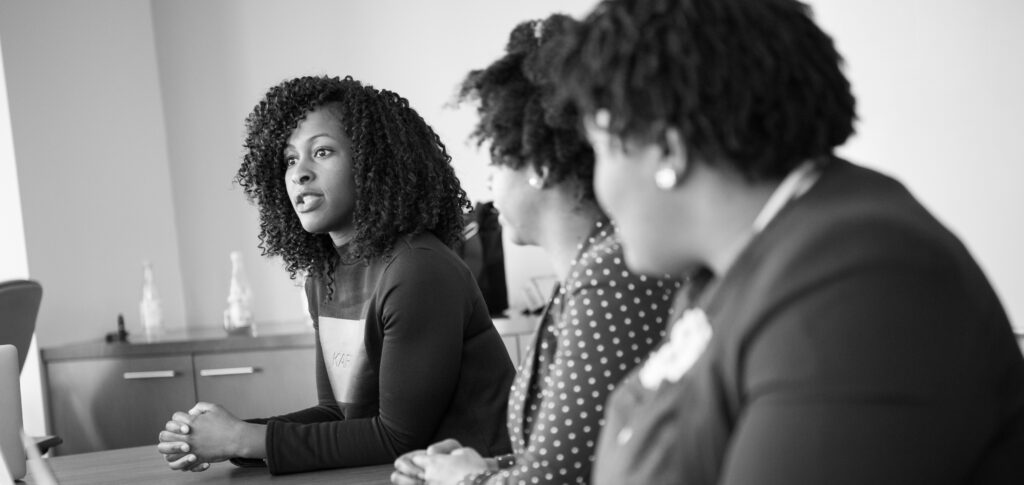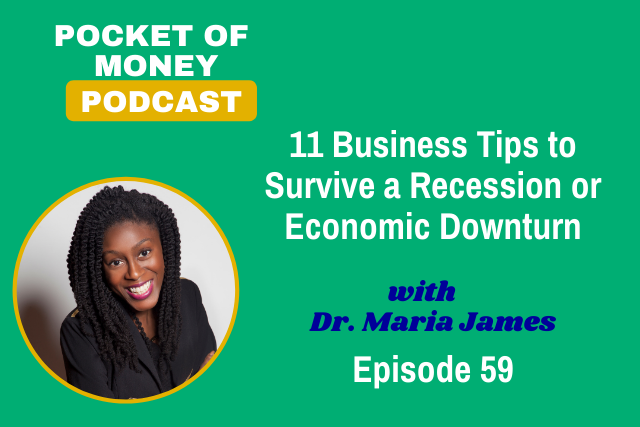Achieving the American Dream Through Financial Literacy Education

The racial wealth gap is a pervasive and worrying issue in modern society. This refers to the significant disparities between different racial groups, with white households consistently having far more advantages in income, health, education, and opportunities than Black, Indigenous, and People of Color (BIPOC) households.
Furthermore, this gap has been widening over time, with the wealth of white households increasing at a much faster rate than that of BIPOC households.
The racial wealth gap is a pervasive and worrying issue in modern society. This refers to the significant disparities between different racial groups, with white households consistently having far more advantages in income, health, education, and opportunities than Black, Indigenous, and People of Color (BIPOC) households.
The data on the wealth difference between races is shocking. According to Pew Research Center tabulations of Survey of Income and Program Participation data, the median white household has a net worth of between $100,000 and $200,000. Meanwhile, Blacks and Latinos have a net worth of between $10,000 and $20,000.
The net worth of the average Black family in America is roughly one-tenth that of a white family.
Older millennials were found to have wealth levels 34% below older generations at similar ages, in a study conducted by the Federal Reserve Bank of St. Louis in 2018. The second installment of the study on the other hand revealed that when broken down by race, the result is even more alarming.
Black households fell further below wealth expectations between 2007 and 2019 compared to white and Hispanic households that showed significant progress in building wealth. The recession caused by the coronavirus pandemic also had an adverse effect on this issue and can be taken into consideration although the full data for the phase is not yet available.
Many factors lay the groundwork for the racial wealth gap. These include historical injustices such as slavery, segregation, concentrated poverty, discriminatory practices like redlining, and all other factors limiting the access of BlPOC households to social services, obtaining bank accounts, and even safe communities.
In 1995, the book “Black Wealth, White Wealth” by Melvin Oliver and Thomas Sapiro, examined the role of accumulated assets, or wealth, instead of just income in the continual racial division.
Alexandra Killewald, a professor of sociology in the Faculty of Art and Sciences at Harvard University says that wealth is even more unequal than income itself.
Wealth is even more unequal than income itself.
Alexanda Killewald
Many scholars believe that the Black American’s ability to amass wealth has been hindered by the scars of slavery and other forms of discriminatory practices.
Going back to the time of slavery when owning Black Americans was a form of wealth, the ratio of white-to-Black wealth was 56 to 1. In other words, for every dollar, a typical white American had, an average Black person only had about 2 cents in parallel. A huge population of Black Americans was indeed deprived of the ability to accumulate wealth and pass it on to their offspring.
In 1870, a few years after the 13th amendment that abolished slavery was passed, the wealth gap ratio between white and black Americans dropped to 23:1. Apart from enslaved people being taken out of the total wealth of white America in 1860, Black Americans also learned to manage their finances which includes earning, investing, and accumulating wealth. By 1920, what used to be a 56:1 white-to-Black wealth gap fell to as low as 10:1. Closing the wealth gap seemed to be close to being achieved but the progress decelerated since then, and worse started to widen in the 1980s.
Ellora Derenoncourt, a young economist and the founder and director of Princeton’s Program For Research On Inequality along with her colleagues conducted a thought experiment with the aim to explain why despite all the apparent progress Black Americans made in many industries and fields, the progress in closing the average racial wealth gap has been very little since 1950.
The imaginary scenario depicts the racial wealth gap as it might appear if Black Americans had been able to achieve the same capital gains and rates of savings starting at the severe level of wealth inequality we experienced in 1860. There would have been a difference of 3 between the current ratio and the result of the imaginary scenario’s white-to-black wealth – that is 3:1 as opposed to 6:1. It is apparent however, that despite the extreme disparity in the wealth ratio, the ordinary Black American would still only have a third of the wealth of the average White American.
The consequences of the racial wealth gap are far-reaching and severe. BIPOC individuals and families are more likely to experience poverty, homelessness, and food insecurity. They are also more likely to have lower life expectancies and suffer from chronic health conditions such as diabetes and heart disease.
The racial wealth gap also has a negative impact on the wider economy, as it limits the purchasing power of BIPOC households, reduces economic growth, and intensifies income inequality.
Dealing with the racial wealth gap requires a multilayered methodology. It entails recognizing and confronting the historical and enduring racism, and discrimination that has widened the gap. Additionally, it requires addressing the root causes of economic inequality. For instance, tax policies that benefit the wealthy at the expense of the middle and working classes.
It also involves the implementation of policies that promote economic and racial fairness, such as raising the minimum wage, providing universal health care and affordable housing, and investing in education and job training programs for BIPOC communities.
Dealing with racial wealth gap requires a multilayered methodology
They discovered that the employees’ incomes soared during the times when access to education amidst the technological revolution was improved, like in the early 1900s. Conversely, in the 1980s, inequality began to expand at the same time the numbers of college graduates began to decline, and overall high school graduation rates steadied.
Expanding differences in educational funds and learning opportunities between high and low-income households caused increasing disparities. Chances to realize a better life compared to the previous generations in the US are being spoiled by the continuing disparities. Newly available wage data from the Economic Policy Institute has found that the top 1% has growth in wages by 157 percent while the bottom 90% sees only 24 percent. Goldin identifies inequality as one of the key factors keeping the American dream unlikely to happen in the near future.
The racial wealth gap is a complex and troubling issue that has deep historical roots and ongoing systemic causes. It is not just a problem in and of itself, but also serves as a root cause of many other inequities. It is a problem that affects not only individuals and families but also entire communities and the wider economy.
For instance, the wealth gap leads to disparities in education, housing, and healthcare. Wealthy families can afford to send their children to better schools, live in safer neighborhoods with better amenities, and access higher-quality healthcare. On the other hand, families with limited wealth are often forced to settle for substandard living conditions, which can have a lasting impact on their health and well-being. Therefore, addressing the racial wealth gap is essential to tackling broader issues of inequality in our society.
Tackling the racial wealth gap requires a comprehensive approach that acknowledges a history older than the nation, pushing for economic and racial justice and addressing the root causes of economic disparity. And while all of these sound complicated and intricate, experts have been promoting investment in better public education as one of the first moves. Anthony Jack, an assistant professor at the Harvard Graduate School of Education says that access to an equal education has never been part of the American story even though education may be the great equalizer.
But beyond the academic lessons the public education can offer, every school should have a financial literacy program. Currently, in order to graduate, students must complete a personal finance course in 23 states. With Florida being the biggest state with a high school graduation requirement for a financial literacy course, 27 states are still to be added.
The Next Gen Personal Finance considers a stand-alone personal finance course to be the industry standard and 11 states, including Florida, now require students to take one in order to graduate. In more than 20 other states, personal finance education is taught in various methods in the classroom. Through these initiatives, states are demonstrating their understanding of the value of providing kids with personal financial education.
While the epidemic disrupted such schooling nationwide, it also emphasized the value of instilling good money management skills. Hence, we need to challenge the claim that better education is the first move to closing the wealth gap and see financial literacy education as the next challenge. We need to challenge the claim that better education is the first move to closing the wealth gap and see financial literacy education as the next challenge.
In the end, while we can all agree that financial literacy education is essential to bridging the racial wealth gap, it is still an insufficient piece of the jigsaw. So, individuals with the means should actively engage in and direct capital into historically underserved communities. It is crucial to teach people how to invest, save, and launch a business.
Yet, if someone is living paycheck to paycheck, they may not have the luxury of making financial plans since they are focused on surviving each week. Some people are lucky to have numerous mentors who devote a lot of time and knowledge to them, but this is not the story for everyone.
Building a solid economic base that individuals may grow on requires ensuring equitable access to opportunities for employment, finance, and education. We can make the American dream a bit less improbable—and improve the economy for all of us— by scaling technology in ways that meet people where they are, investing in underrepresented communities, and most importantly, standardizing fundamental financial education.






Responses